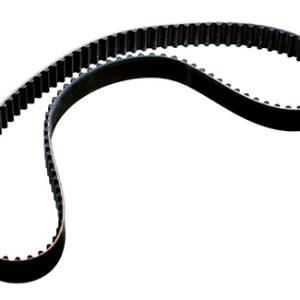Timing belts/ Synchronised belts
 Timing belts, also known as toothed or synchronous belts, are a type of power transmission belt used in engines and machinery to synchronize the rotation of the crankshaft and camshaft. They have teeth or grooves on the inner surface that mesh with corresponding grooves on the pulleys. The primary function of a timing belt is to ensure precise and synchronized movement between these shafts, controlling the opening and closing of engine valves. Timing belts are an integral component of many modern internal combustion engines, providing efficient and reliable timing control for optimal engine performance. Regular maintenance and timely replacement are essential to prevent potential engine damage due to the wear and tear of the timing belt.
Timing belts, also known as toothed or synchronous belts, are a type of power transmission belt used in engines and machinery to synchronize the rotation of the crankshaft and camshaft. They have teeth or grooves on the inner surface that mesh with corresponding grooves on the pulleys. The primary function of a timing belt is to ensure precise and synchronized movement between these shafts, controlling the opening and closing of engine valves. Timing belts are an integral component of many modern internal combustion engines, providing efficient and reliable timing control for optimal engine performance. Regular maintenance and timely replacement are essential to prevent potential engine damage due to the wear and tear of the timing belt.
Key features and aspects of timing belts include:
1. Toothed Design: Timing belts have teeth on the inner side, allowing them to
engage with matching grooves on the pulleys. This toothed design prevents slippage and ensures accurate timing of engine components.
2. Quiet Operation: Compared to chain systems, timing belts operate more quietly, contributing to a smoother and quieter engine performance.
3. High Precision: The toothed design allows timing belts to provide precise
and synchronous movement, critical for the proper functioning of engines with overhead camshafts.
Showing the single result

